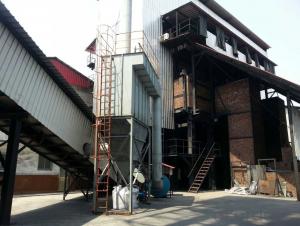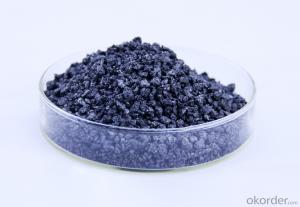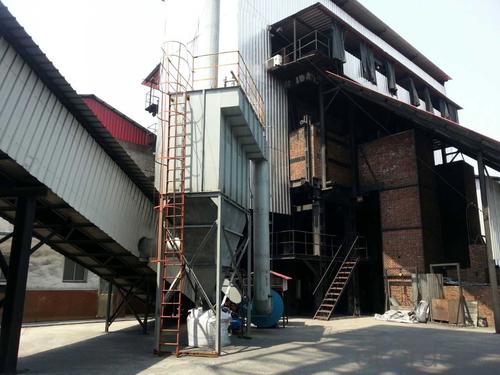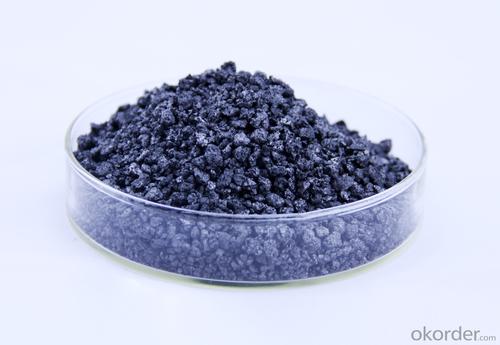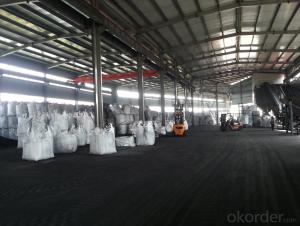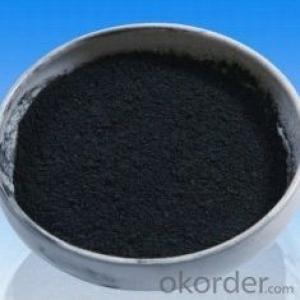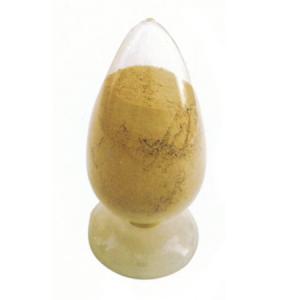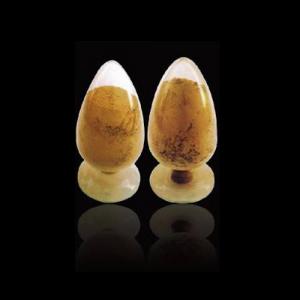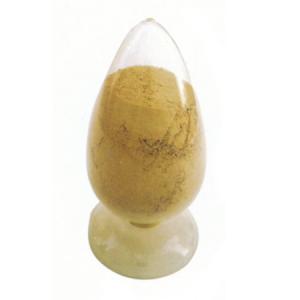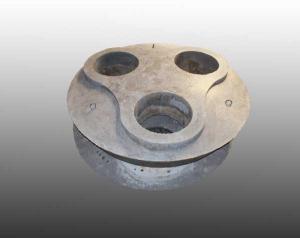Monolithic Refractories for Iron and Steel Industry:Low N Calcining Petroleum Coke with Good Quantity
- Loading Port:
- Shekou
- Payment Terms:
- TT or LC
- Min Order Qty:
- 20 m.t
- Supply Capability:
- 1000 m.t/month
OKorder Service Pledge
OKorder Financial Service
You Might Also Like
Factory Background
The factory is majorly running and operating carbon additive (pitch coke, calcined petroleum coke and anthracite), low nitrogen carbon additive, and brake pad making material. Company is the long term supplier of Sinosteel Corporation, Shanghai Carbon Corporation, the plant of SGL Group the Carbon Company in China and some largest special carbon products producing plants.
YUAI also supplies huge amout of high quality carbon additive and graphite carbon additive to steel plants, foundries and ferrotungsten plants. YUAI has been assigned by BAO STEEL as the only organization for processing pitch coke for export purpose. The group’s major products are constantly exported to Japan, Korea, Malaysia, South East Asia countries, Europe and America, which receive praises by our consumers.
The group has invested numbers of calcinators in Anhui China to ensure the capability of producing and processing huge amount of carbon additive. Further investment is on process. According to the orders from customers, YUAI is able to processing and providing different specifications of carbon additive and other products. To provide best quality of products and to offer customers most satisfied service is YUAI’s operating objectives.
Calcined Petroleum Coke
FC:98.5%min,
S:0.5%max
A:0.8%max
V:0.7%max
Mositure:0.5%max
Size:1-5mm
This product is mainly used in steel-making and foundry. Calcined Petroleum Coke
Calcined Petroleum Coke comes from delayed coke which extracted from oil refinery. Although Calcined Petroleum Coke contains a little bit higher level of sulfur and nitrogen than pitch coke, the price advantage still makes it widely used during steel-making and founding as a kind of carbon additive/carburant.
Technology:
Laborary Equpment
In our lab,we has a high precision balance,mullfe furnace,sample making machine, dring box,sulfur measurement instrument and other calibratiing equipments.As a result,before deliverung to our customers,our products have to pass a strict test to ensure the quality and components.The testing reports will be sent to our customers to confirm untill they satisfy with it.
Packaging & Delivery
Packaging Detail:25kg paper bag into 1t weaving bag 5kg, 10kg and 20kg weaving bag into 1t weaving bag 25kg weaving bag put on pallet covered with entanglement wrap product direct into packing bag 25kg paper bag put on pallet covered with entanglement Wrap 25kg weaving bag into 1t weaving bag.
Delivery Details: 7 days
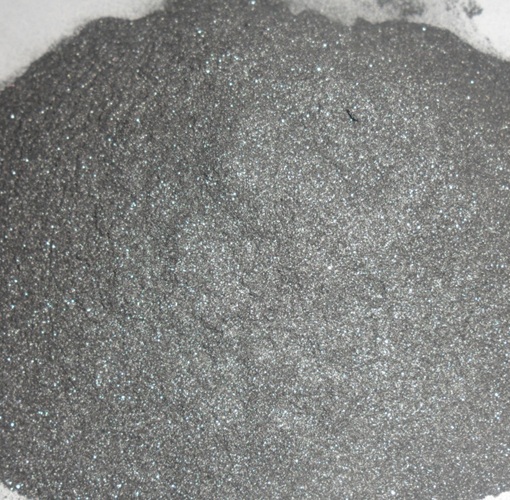
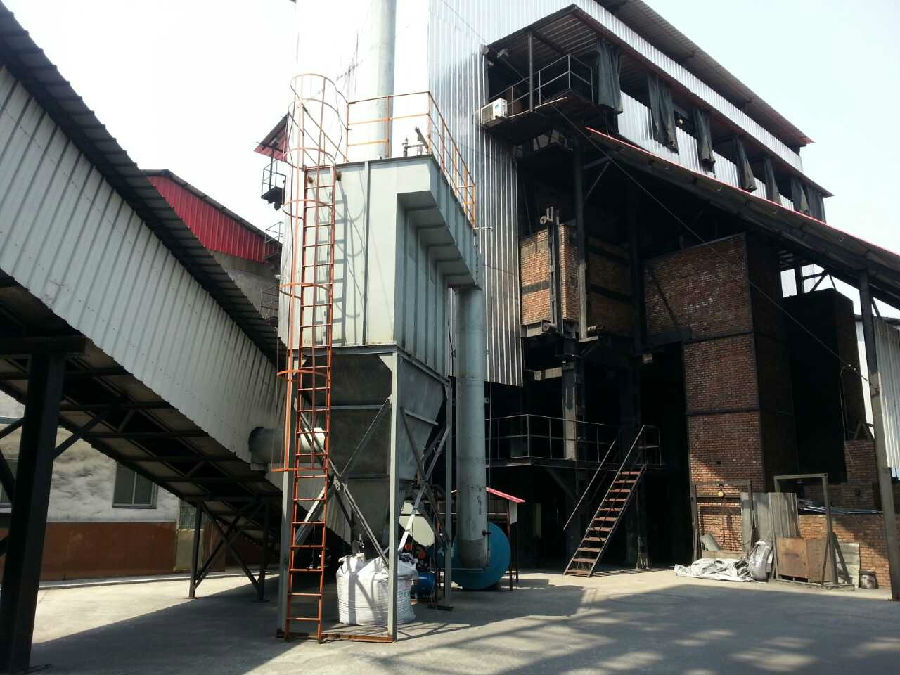
- Q: How do monolithic refractories impact the overall productivity of iron and steel operations?
- Monolithic refractories play a crucial role in enhancing the overall productivity of iron and steel operations. These refractories are specially designed to withstand extreme temperatures, chemical reactions, and mechanical stress that occur during the production process. One significant impact of monolithic refractories on productivity is their ability to reduce downtime and increase operational efficiency. The high thermal conductivity and resistance to thermal shock of these refractories enable them to maintain stable temperatures within the furnace, preventing sudden temperature fluctuations that can cause equipment failure and production delays. This, in turn, ensures a continuous and uninterrupted production process, leading to increased productivity. Moreover, monolithic refractories offer superior corrosion resistance, preventing the erosion and degradation of furnace linings. This resistance to chemical attacks from molten metals and slag helps prolong the lifespan of the refractory lining, reducing the frequency of repairs and replacements. Consequently, the reduced maintenance requirements translate into less downtime and higher productivity for iron and steel operations. Additionally, monolithic refractories facilitate faster installation and repair processes compared to traditional brick refractories. Their fluid-like nature allows for easy application and shaping, resulting in shorter installation and curing times. This quick turnaround time minimizes production interruptions during repairs or maintenance, further enhancing overall productivity. Furthermore, the use of monolithic refractories can optimize energy consumption in iron and steel operations. Their excellent insulation properties help retain heat within the furnace, reducing heat loss and energy waste. This leads to improved energy efficiency and cost savings, contributing to increased productivity and profitability. In summary, monolithic refractories have a significant impact on the overall productivity of iron and steel operations. Their ability to withstand extreme conditions, reduce downtime, resist corrosion, facilitate quick repairs, and optimize energy consumption all contribute to improved efficiency and productivity in the industry.
- Q: How do monolithic refractories perform in rotary kiln applications?
- Monolithic refractories perform exceptionally well in rotary kiln applications due to their high thermal shock resistance, excellent chemical resistance, and superior strength at high temperatures. Their ability to withstand extreme heat and harsh chemical environments makes them ideal for lining the interior of rotary kilns. Additionally, monolithic refractories offer easy installation and maintenance, ensuring efficient and reliable kiln operations.
- Q: What are the considerations for repairing and relining monolithic refractories?
- When repairing and relining monolithic refractories, there are several key considerations that need to be taken into account. First and foremost, it is crucial to assess the extent of the damage or deterioration in order to determine the appropriate repair method. Factors such as the type of refractory material, the operating conditions, and the expected service life must be considered. Additionally, it is essential to select the right refractory material for the repair or relining process. This involves evaluating the temperature range, chemical resistance, thermal conductivity, and mechanical properties of the refractory material to ensure it is compatible with the specific application. Another important consideration is the proper preparation of the surface before applying the repair material. This may involve removing any loose or damaged refractory, cleaning the surface thoroughly, and creating a suitable bonding surface to ensure optimal adhesion. Furthermore, the application technique and curing process of the repair material should be carefully followed to achieve the desired performance and durability. This may involve proper mixing, application thickness, drying time, and temperature control. Lastly, it is crucial to conduct regular inspections and maintenance to identify any signs of deterioration or damage early on. This proactive approach will help prevent major repairs or relining in the future and prolong the overall lifespan of the monolithic refractories.
- Q: How do monolithic refractories contribute to the efficiency of iron and steel production?
- Monolithic refractories play a crucial role in enhancing the efficiency of iron and steel production processes. These refractories are known for their superior thermal properties, high resistance to mechanical stress, and excellent resistance to chemical corrosion. One key way that monolithic refractories contribute to the efficiency of iron and steel production is by providing effective insulation. By lining the walls of furnaces and other high-temperature equipment, monolithic refractories prevent heat loss and ensure that the desired temperatures are maintained consistently. This insulation helps to reduce energy consumption, as less heat is wasted, ultimately leading to cost savings. Additionally, monolithic refractories offer excellent thermal shock resistance. In the iron and steel industry, frequent heating and cooling cycles are common, and traditional refractory materials may crack or fail under these conditions. However, monolithic refractories can withstand rapid temperature changes without failure, ensuring the longevity and reliability of the refractory lining. This resistance to thermal shock reduces downtime for repairs and maintenance, thereby increasing the overall efficiency of the production process. Moreover, monolithic refractories have strong resistance to chemical corrosion. In iron and steel production, various corrosive substances are present, including molten metal, slag, and gases. The use of monolithic refractories as lining materials helps to protect the underlying structures from chemical attack, preventing erosion and extending the service life of the equipment. This resistance to corrosion reduces the need for frequent repairs or replacements, leading to cost savings and increased productivity. Furthermore, monolithic refractories offer easy installation and repair. Unlike traditional refractories, which are often built brick by brick, monolithic refractories are applied as a single mass. This allows for faster installation and reduces the potential for weak points or joints that might compromise the overall efficiency of the refractory lining. Additionally, when repairs or maintenance are required, monolithic refractories can be easily patched or replaced, minimizing downtime and ensuring smooth operation. In summary, the use of monolithic refractories in iron and steel production contributes to increased efficiency in several ways. Their excellent thermal insulation properties reduce energy consumption, while their resistance to thermal shock and chemical corrosion ensures reliable and long-lasting refractory linings. Additionally, their easy installation and repair capabilities further enhance productivity. Overall, monolithic refractories are a vital component in improving the efficiency and sustainability of iron and steel production processes.
- Q: Can monolithic refractories be used for the lining of ladle refining furnaces and VOD converters?
- Yes, monolithic refractories can be used for the lining of ladle refining furnaces and VOD converters. Monolithic refractories are versatile and can be shaped and installed easily, making them suitable for lining various types of furnaces and converters, including ladle refining furnaces and VOD converters.
- Q: What are the main factors affecting the thermal conductivity of monolithic refractories?
- The main factors affecting the thermal conductivity of monolithic refractories are the composition of the refractory material, the density of the material, the porosity of the material, and the presence of any additives or impurities. The composition of the refractory material plays a significant role in determining its thermal conductivity. Different types of refractory materials, such as alumina-based, silica-based, or magnesia-based, have different thermal conductivities due to their varying chemical compositions. For example, materials with a higher alumina content generally have higher thermal conductivities compared to materials with a higher silica content. The density of the refractory material also affects its thermal conductivity. Generally, materials with higher densities have higher thermal conductivities because the closely packed particles allow for more efficient heat transfer. On the other hand, materials with lower densities have lower thermal conductivities as the heat transfer is hindered by the presence of air pockets or voids. The porosity of the refractory material is another important factor affecting its thermal conductivity. Porosity refers to the presence of small pores or spaces within the material. Higher porosity leads to lower thermal conductivity as the air or gas trapped within the pores acts as an insulator, reducing the ability of the material to conduct heat. Therefore, materials with lower porosity tend to have higher thermal conductivities. The presence of any additives or impurities in the refractory material can also affect its thermal conductivity. Certain additives or impurities, such as carbon or metallic oxides, can enhance or inhibit heat transfer in the material. For instance, the addition of carbon can increase thermal conductivity due to its high thermal conductivity, while the presence of metallic oxides may decrease thermal conductivity due to their lower thermal conductivities. In summary, the thermal conductivity of monolithic refractories is influenced by the composition, density, porosity, and the presence of any additives or impurities. Understanding and controlling these factors are crucial in designing and selecting refractory materials with optimal thermal conductivity for specific applications.
- Q: What are the key properties and characteristics of monolithic refractories?
- Monolithic refractories, renowned for their ability to be shaped or installed in a single piece without joints, are a type of refractory material. They find their utility in high-temperature applications where traditional brick or tile refractories may not suffice. One noteworthy attribute of monolithic refractories lies in their superior thermal stability. They can withstand extreme temperatures without significant expansion or contraction, making them an ideal choice for furnaces, kilns, and other heat-intensive environments. This quality ensures the maintenance of their structural integrity and grants long-lasting performance. Another significant characteristic of monolithic refractories is their high resistance to thermal shock. They can endure abrupt temperature changes without cracking or spalling, a crucial aspect when the refractory material is exposed to alternating hot and cold conditions. The resistance to thermal shock ensures the refractory lining's longevity, reducing the need for frequent repairs or replacements. Monolithic refractories also demonstrate commendable mechanical strength, enabling them to withstand the mechanical stresses and loads imposed on them during usage. They possess excellent load-bearing capacity, resisting abrasion, erosion, and impact, making them suitable for applications where the refractory material faces mechanical wear or impact. Moreover, monolithic refractories offer the advantage of easy installation and repair. Unlike traditional refractories that necessitate skilled labor and time-consuming bricklaying techniques, monolithic refractories can be cast, gunned, or sprayed into place. This effortless installation expedites turnaround times and minimizes downtime during repairs or maintenance. Lastly, monolithic refractories exhibit commendable chemical resistance to various corrosive agents, such as acids, alkalis, and molten metals. This property renders them suitable for use in industries where the refractory material encounters aggressive chemical environments, including the steel, petrochemical, and glass industries. In summary, monolithic refractories possess excellent thermal stability, high resistance to thermal shock, good mechanical strength, effortless installation and repair, and commendable chemical resistance. These properties establish them as the preferred choice in high-temperature applications where durability, reliability, and performance are of utmost importance.
- Q: How do monolithic refractories help in enhancing the durability of iron and steel equipment?
- Monolithic refractories help enhance the durability of iron and steel equipment by providing a protective lining that withstands high temperatures, chemical corrosion, and mechanical stress. This lining acts as a barrier, preventing the contact between the equipment and harsh operating conditions, thus minimizing wear and extending the lifespan of the equipment.
- Q: What are the recommended installation techniques for monolithic refractories?
- The recommended installation techniques for monolithic refractories typically involve proper surface preparation, mixing of refractory materials, and precise application. It is crucial to clean and remove any loose debris from the substrate before installation. The refractory materials should be mixed thoroughly with the appropriate water content to achieve the desired consistency. It is recommended to use vibration or tamping techniques during application to remove air pockets and ensure proper compaction. Careful curing and drying processes should be followed to prevent thermal shock and achieve optimal performance.
- Q: How do monolithic refractories perform in torpedo ladle applications?
- Monolithic refractories are commonly used in torpedo ladle applications due to their excellent performance and durability. Torpedo ladles are used in the steelmaking process to transport and pour molten metal from the blast furnace to the steelmaking furnace. Monolithic refractories, also known as unshaped refractories, are made from a single material and can be applied as a single, cohesive mass. This makes them highly versatile and easy to install in the torpedo ladle. In torpedo ladle applications, monolithic refractories offer several advantages. First and foremost, they have high heat resistance, allowing them to withstand the extreme temperatures and thermal shocks experienced during the transfer and pouring of molten metal. This ensures that the refractories do not crack or fail under these harsh conditions. Additionally, monolithic refractories have excellent corrosion resistance properties, which is crucial in torpedo ladles where the molten metal can be highly corrosive. They are able to withstand the aggressive chemical environment and prevent chemical reactions that could lead to refractory deterioration. Moreover, monolithic refractories have good thermal insulation properties, reducing heat loss from the molten metal and promoting energy efficiency. This helps to maintain the desired temperature of the metal, ensuring optimal steelmaking conditions. Furthermore, monolithic refractories offer good mechanical strength and resistance to abrasion, making them highly suitable for torpedo ladle applications where the refractory lining is subjected to mechanical stress and wear. Overall, monolithic refractories perform exceptionally well in torpedo ladle applications due to their high heat resistance, corrosion resistance, thermal insulation properties, and mechanical strength. They are able to withstand the extreme conditions and provide a reliable and long-lasting lining for torpedo ladles in the steelmaking industry.
Send your message to us
Monolithic Refractories for Iron and Steel Industry:Low N Calcining Petroleum Coke with Good Quantity
- Loading Port:
- Shekou
- Payment Terms:
- TT or LC
- Min Order Qty:
- 20 m.t
- Supply Capability:
- 1000 m.t/month
OKorder Service Pledge
OKorder Financial Service
Similar products
Hot products
Hot Searches
Related keywords
